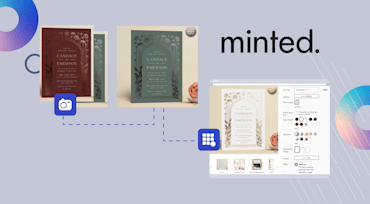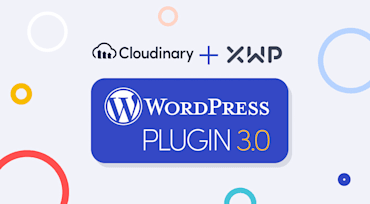When brands like you adopt a direct–to-consumer (DTC) e-commerce approach with no involvement of retailers or marketplaces, you gain direct and timely insight into evolving shopping behaviors. Accordingly, you can accommodate shoppers’ preferences by continually adjusting your product offering and interspersing the shopping journey with moments of excitement and intrigue. Opportunities abound for you to cultivate engaging customer relationships.

Shoppers return time and again to Minted’s global online community of independent artists and designers because they know they can count on unique, statement-making products of the highest quality there. Concurrently, the visual imagery on Minted.com must do justice to the designs into which the creators have poured their hearts and souls. For Minted’s VP of Engineering David Lien, “Because we are a premium brand, we need to ensure that every single one of our product images matches the selected configuration exactly. For example, if you pick an 18x24 art print on blue canvas, we will show that exact combination on the hero images in the PDF.”

With the introduction of the Media Library Extension, a Chrome-browser add-on that streamlines the access to, search for, and management of images and videos, Cloudinary offers yet another effective tool for its Digital Asset Management (DAM) solution. Let’s have a look at how most teams are currently working with media assets and how the new add-on not only boosts efficiency, but also renders the process a pleasure to work with.

In this fast-paced digital world, meeting the content demand for all channels is a daunting challenge for organizations. Cloudinary’s Digital Asset Management (DAM) solution offers a digital-first, AI-powered approach for storing, managing, collaborating on, and delivering optimized content. What’s more, we’re constantly searching for new ways to enhance, augment, and upgrade your software tools and processes so you not only win the “content challenge” but also gain time and resources to focus on important business-oriented tasks.

With building, growing, and maintaining a strong digital presence being a top priority for all brands, high-quality visual content is paramount. In fact, consumers are 40 times more likely to share visual content on social networks than on other forums. Plus, a recent study from Wyzowl found that 84% of consumers made purchase decisions after watching a video, which explains why many brands are adding more and more visual media to their sites.

As website and mobile apps rely more on visual media to create engaging user experiences, delivering strong web and app performance becomes more challenging for developers. The faster your site, the more time visitors would spend on it. Conversely, the slower the site, the higher the bounce rate, and the lower Google ranks it in SEO.

Artificial intelligence (AI), machine learning, virtual reality, the so-called metaverse—it can be tough to keep tabs on the development of technologies. In particular, for businesses or brands characterized by highly visual experiences—retail, entertainment, travel and hospitality, and so forth—identifying which technologies to prioritize is challenging.

In today's digital age, businesses must deliver to all viewing devices visual media that tells their brand’s story. To do so, the digital content must be in one place as the single source of truth for use by the entire organization. Additionally, syndicating an ever-growing library of media assets for all channels is a daunting challenge because of the constant need to transform assets into the correct format for delivery, in context, and at scale.

Like people, companies are creatures of habit that tend to continue doing things the way they’ve always been done, especially if the processes seem to be working just fine. Consequently, businesses are at times unaware that more effective and efficient ways exist.

Media management is at the heart of what WordPress does, and with Cloudinary’s WordPress Plugin, we’re all set to alleviate numerous pain points for WordPress users by adapting the plugin’s features developed by Cloudinary, and adapted by XWP, on its platform into a working WordPress plugin.
